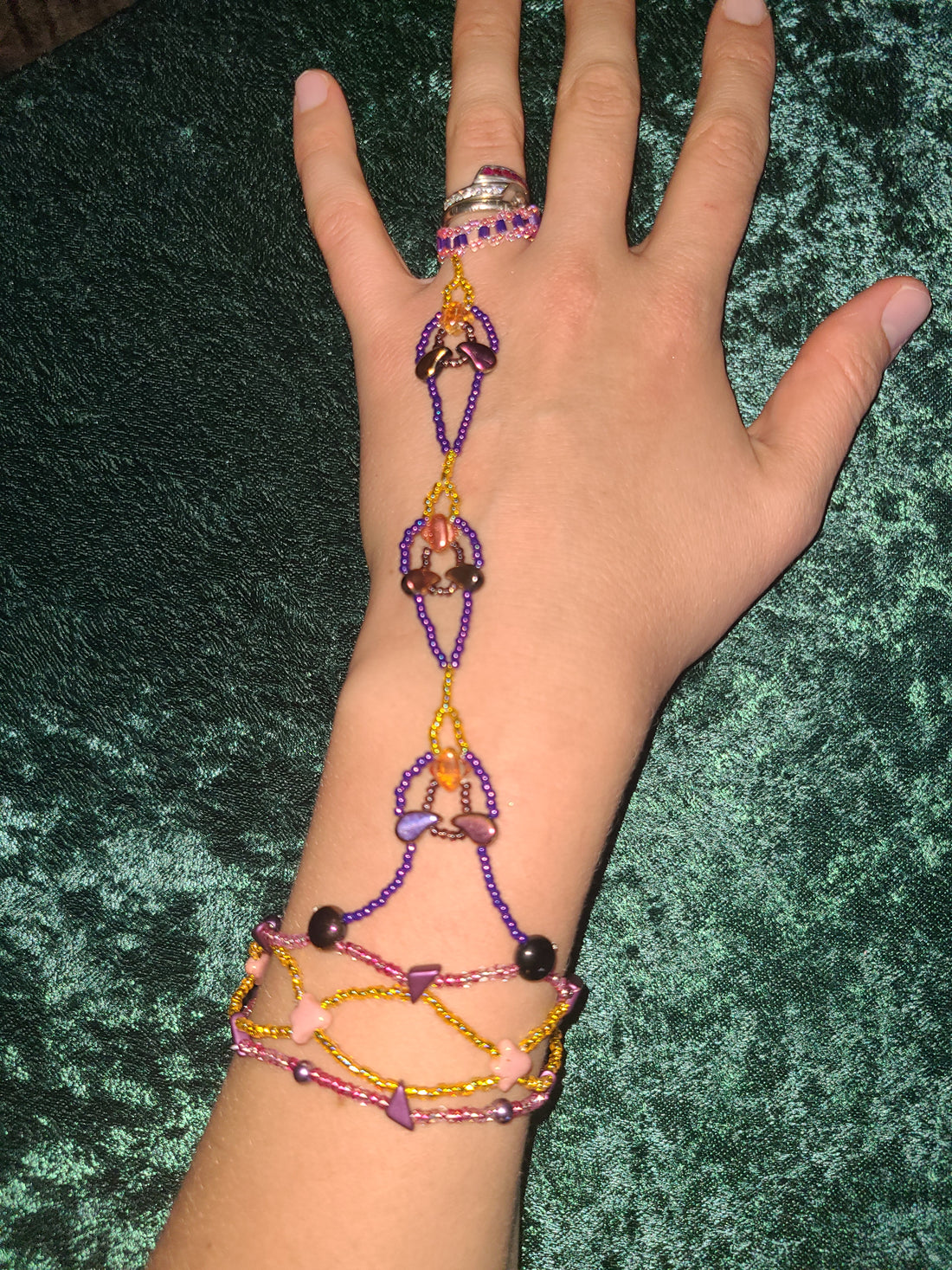Over the last 20-odd years, I’ve done a lot of experimentation with jewelry materials- glass beads, metal findings, seed beads, gemstones, and a whole lot in between.
In the beginning, I used exclusively glass seed beads and did intricate beadwork. A few months in, I discovered the wonderful world of glass statement beads. Over the last couple of decades, I have amassed a LOT of them. I still have some from back in the day (that have since been discontinued or the locally owned shops where I got them are defunct). I have also gotten a lot of hand-me-down beads from friends and family who tried beading and decided it wasn’t their cup of tea. I’ve also gotten glass beads from a few online businesses.


As a little girl in the 90s, I sported the “Best Friends” necklaces that were hot at the time. Like many of my peers, I got the dreaded itchy neck and had to stop wearing it. Over the last 18 months, I have chatted with many customers who have shared similar experiences, and they have said that they avoid all metal-based jewelry as a result.
Like a lot of you, I also found that I had some minor irritation with certain earrings. As a child, I amassed many pairs of bargain earrings from Claire’s, and I had some unpleasant reactions. However, I LOVED chandelier earrings, so I was careful to only buy hypoallergenic ones. Early on in making jewelry, I used steel earring hooks, which I have since learned are less than stellar for allergy concerns. I have since switched over to sterling silver. So if you order a pair of my earrings, they will be on sterling silver hooks. Adverse reactions to sterling silver are possible, but are a lot less common. Therefore, those with extreme metal allergies might want to avoid even sterling silver jewelry.
As a teen, when I got into jewelry making, I looked for an alternative to metal chain- I had many necklace chains get horrendously tangled. I came up with the necklace base that I still use today, which uses a metal clasp, and the “chain” is actually made of a series of half-inch glass tube-shaped bead on durable nylon monofilament (similar to fishing line). So the only metal in most of my necklaces is the clasp. So no more metal chain against the skin, and virtually no risk of tangling.
Another thing I like about using glass beads is that the sky is the limit for shaping the design. If a design doesn’t work how I envision, glass beads are easy to reconfigure. Not to mention the infinite variety of colors and finishes that I can do with beads! I use a combination of nylon monofilament and specialized bead thread (modern bead thread is fantastically durable!). For structural components, such as a frame or those supporting weighty stones, I use monofilament. For the design, I use bead thread since it’s more flexible. This leads to a durable but flexible necklace.

As for bracelets, they are totally metal-free. I use polymer stretch cord, which provides a forgiving fit and makes my bracelets size-inclusive. These cuff bracelets can easily slide over your hand to easily put on and remove. For bracelets, I have always used elastic thread. Holy cow- I remember the first time I made a bracelet with fibrous elastic cord. It wasn’t very durable, and sometimes, the sharp edge of tube-shaped beads would cut it- ack! But polymer stretch cord is a lot more durable and easier to work with. My hand chains, which feature a bracelet with beadwork along the hand and a ring of beads, are also totally metal-free. The ring is made of polymer stretch cord and class beads. Hand chains and bracelets are going to be a good bet for you if you have issues with metal.
I absolutely love being able to make bold, striking jewelry, that uses little to no metal. Over the years, glass and gemstone beads are the materials I keep coming back to. The variety of colors and designs are limitless! With the wonders of bead thread, I will continue to have interesting designs on the horizon, so stay tuned!
Have a wonderful week.
All the best,
Grace



